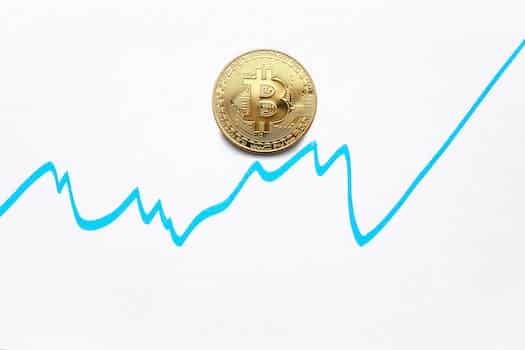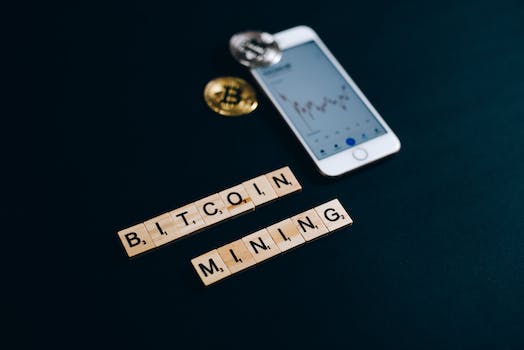A crucial resource for comprehending the expenses related to Bitcoin mining is the price chart. Being one of the most widely used cryptocurrencies, mining Bitcoin has grown to be a profitable business for numerous people and organizations. However, there are substantial costs associated with mining Bitcoin, such as those related to maintenance, equipment, and electricity. Miners can obtain important insights into the sustainability and profitability of their mining operations by examining the Bitcoin mining pricing chart. This post will examine the several elements that go into Bitcoin mining expenses and how the price chart can assist miners in making well-informed investment decisions.
- 1. Introduction
- 1.1. What is Bitcoin Mining?
- 1.2. Why is Bitcoin Mining Important?
- 1.3. How Does Bitcoin Mining Work?
- 1.4. History of Bitcoin Mining
- 1.5. Current State of Bitcoin Mining
- 2. Factors Affecting Bitcoin Mining Prices
- 2.1. Bitcoin Price Volatility
- 2.2. Mining Difficulty
- 2.3. Energy Costs
- 2.4. Hardware Costs
- 2.5. Market Demand
- 3. Understanding Bitcoin Mining Price Charts
1. Introduction
Making sure your connection is secure is essential when using remote desktop connections. We’ll go over some crucial security tips in this part that you should remember when utilizing a remote desktop connection.
1. Use secure and distinctive passwords: Secure and distinctive passwords must be configured for the server and the remote desktop client. To avoid unwanted access, stay away from using passwords that are popular or simple to figure out.
2. Turn on Network Level Authentication (NLA). By demanding authentication prior to the establishment of a remote desktop session, NLA adds an additional degree of security. It aids in defense against attempts by unauthorized users to log into your remote desktop.
3. Maintain an up-to-date remote desktop client: Update your remote desktop client software frequently to guarantee you have access to the most recent security updates and enhancements. Vulnerabilities in outdated software could be exploited by hackers.
4. Turn on a firewall: Set up your firewall to prevent unauthorized users from accessing your remote desktop session. Restrict connections to reliable networks or IP addresses to reduce the possibility of unwanted access.
5. Make use of a virtual private network (VPN): To create a safe and encrypted connection between your local computer and the remote desktop server, think about utilizing a VPN. This provides an additional degree of security, particularly when using public networks to access remote desktops.
You can improve the security and privacy of your remote desktop session by paying attention to these security factors. Proactively guarding your data will help shield it from potential security attacks.
1.1. What is Bitcoin Mining?
Making ensuring your machine satisfies the requirements is essential before configuring a remote desktop connection. This will guarantee a seamless and fruitful connecting procedure. Here are some important points to consider:
1. Operating System Compatibility: Check to see if the operating systems on the local and remote machines are compatible. For instance, Windows 10 and Windows 7 or later versions can connect via a remote desktop.
2. Network Connectivity: Verify that a dependable and steady network is established between the two machines. To prevent lags or disruptions during the remote session, it is strongly advised to have a fast and secure internet connection.
3. Firewall and Port Settings: Verify whether any security programs or firewalls are preventing either computer from opening the ports required for a remote connection. Modify the configuration appropriately to permit Remote Desktop Protocol (RDP) communication.
4. Remote Desktop Enabled: Verify that the remote desktop function is activated on the distant PC. Check if the option to “Allow remote connections to this computer” is selected under the Remote tab of the System Properties settings.
5. User Permissions: Make sure the user account you’re using to connect remotely is authorized to access both the local and remote machines. It ought to be a member of the Remote Desktop Users group or have administrator rights.
You can solve any possible issues and make sure that your remote desktop connection is successfully created by carefully reviewing these system requirements.
1.2. Why is Bitcoin Mining Important?
The security and operation of the Bitcoin network depend heavily on bitcoin mining. This procedure is used to verify transactions, create new Bitcoins, and add them to the blockchain. By using powerful computers to solve intricate mathematical puzzles, miners are able to secure and certify the network. By ensuring the blockchain’s integrity and immutability, this procedure makes it immune to fraud and manipulation. Bitcoin as we know it now would not exist without mining. It is the foundation of the whole Bitcoin ecosystem and a crucial part of what makes it decentralized.
1.3. How Does Bitcoin Mining Work?
The process of creating new bitcoins, validating transactions, and adding them to the blockchain is known as bitcoin mining. It is an essential part of the Bitcoin network that keeps it safe and operational. To put it simply, miners utilize extremely powerful computers to solve challenging mathematical puzzles. In exchange for their efforts, they are rewarded with a set quantity of bitcoins.
This procedure is required since Bitcoin is a decentralized currency, meaning that it is not controlled by a bank or government. Instead, through transaction validation and blockchain security, miners are responsible for preserving the network’s integrity.
Mining bitcoins needs a lot of resources, including specialized technology and a large quantity of electricity. The mathematical puzzles pit miners against one another, with the prize going to the first one to answer it. The severity of the challenges rises as more miners join the network, requiring more energy and processing power.
All things considered, Bitcoin mining is an essential component of the cryptocurrency ecosystem since it makes new bitcoins possible and maintains the network’s security and reliability. Anyone interested in the world of Bitcoin and cryptocurrencies needs to know how it operates.
1.4. History of Bitcoin Mining
The history of bitcoin mining is intriguing and goes all the way back to when the cryptocurrency first appeared. It’s critical to investigate the past of this procedure in order to comprehend the expenses related to mining Bitcoin. The computational process of resolving challenging mathematical puzzles in order to verify and log transactions on the Bitcoin network is known as “bitcoin mining.”
The mystery developer of Bitcoin, Satoshi Nakamoto, first presented the idea of Bitcoin mining in a whitepaper titled “Bitcoin: A Peer-to-Peer Electronic Cash System,” which was released in 2008. In order to guarantee the security and decentralization of the Bitcoin network, Nakamoto created the mining procedure.
In the early days of Bitcoin, standard CPUs (Central Processing Units) from home computers could be used for mining. But as Bitcoin gained traction and acceptance, the difficulty of mining it rose as well, necessitating greater processing power.
Miners switched from CPUs to more potent GPUs (Graphics Processing Units) and then to ASICs (Application-Specific Integrated Circuits), which are made especially for mining Bitcoin, in order to fulfill the increasing demand. Because of these specialist machines’ extraordinary speed at which they can conduct computations, mining efficiency is significantly increased.
The mining process grew more competitive and resource-intensive over time. In order to pool their computing resources and improve their odds of successfully mining a Bitcoin block, miners began to organize into mining pools. The miners were able to divide the benefits more fairly because to this cooperative strategy.
The idea of block rewards is also entwined with the history of Bitcoin mining. In the beginning, miners received 50 Bitcoins for each block they were able to successfully mine. But because Nakamoto intended for there to be a finite amount of 21 million coins in Bitcoin, the block reward is roughly cut in half every four years. The ‘halving,’ as it is commonly called, has a big effect on how profitable Bitcoin mining is.
The Bitcoin mining industry is now fiercely competitive and highly specialized. Large-scale mining enterprises are established in areas with affordable power and welcoming legislation. To stay successful, miners must make costly hardware investments, oversee intricate infrastructure, and continuously work to maximize mining efficiency. Gaining an understanding of the background of Bitcoin mining aids in identifying the various reasons that drive up the expense of this necessary procedure.
1.5. Current State of Bitcoin Mining
The quickly developing field of bitcoin mining is essential to the operation of the well-known cryptocurrency. It entails the computationally demanding process of validating transactions and adding them to the blockchain. The environment for mining Bitcoin has changed significantly over time due to a number of variables, including market dynamics, legislative changes, and technological breakthroughs.
Ordinary personal computers could initially be used for Bitcoin mining, but as the network expanded and more users joined, the difficulty level rose. To increase their mining capacity, miners began leveraging powerful graphics processing units (GPUs). Because of their unmatched efficiency, specialized mining hardware known as ASICs (Application-Specific Integrated Circuits) eventually became the standard.
There is fierce competition and a high entry hurdle in the Bitcoin mining industry right now. The network modifies the mining difficulty as more miners vie to solve challenging mathematical puzzles in order to maintain a steady block generation time. This change in difficulty along with the rising hash rate indicate the increasing amount of processing power going toward Bitcoin mining.
Furthermore, a number of factors affect how much mining Bitcoin costs. The biggest cost is electricity usage because mining equipment need a lot of energy to run continuously. Additionally essential to preventing hardware overheating are cooling systems. The price of purchasing and maintaining mining machinery, like as ASICs, must also be taken into account.
The mining industry has grown extremely sophisticated and industrialized as a result of the increase in the value and popularity of Bitcoin. Large-scale mining activities are concentrated in areas like China and some portions of the United States that have affordable electricity and supportive regulations. In order to mine Bitcoin, these operations frequently entail large mining farms with thousands of ASICs cooperating.
In conclusion, there is intense rivalry, rapid technological development, and growing operational expenses in the Bitcoin mining industry today. Miners need to adjust to shifting dynamics and look for methods to maximize their productivity and profitability as the sector continues to change.
2. Factors Affecting Bitcoin Mining Prices
It is not uncommon to run across a number of problems during the Remote Desktop Connection setup process. A successful and seamless connection can be ensured by resolving these typical setup problems. The following are some typical issues that you might run into and potential fixes for them:
1. Problems with Network Connectivity: One of the most frequent problems is a poor network connection. Make sure a reliable network is connected to the local and remote computers. To make sure everything is operating as it should, check the router settings, Wi-Fi connection, and network wires.
2. Firewall Restrictions: The Remote Desktop Connection may occasionally be blocked by firewalls. Verify the firewall configurations on the local and distant computers to make sure that port 3389—which is typically required for distant Desktop Connection—is open.
3. Incorrect IP Address or Hostname: Verify that you are using the right IP address or hostname for the remote computer. Make sure you typed it accurately and without any mistakes. To see if the distant machine can be reached, use the ‘ping’ command at the Command Prompt.
4. User Permissions: Verify that the account you are using to create the Remote Desktop Connection is authorized. Verify that the user account on the distant computer is a part of the Remote Desktop Users group and has remote access enabled.
5. Outdated Remote Desktop Client: It’s possible that an outdated version of the RDP client won’t work with the remote computer. Update to the most recent version of the Remote Desktop Client.
You may overcome obstacles and set up a Remote Desktop Connection effectively by troubleshooting some frequent setup concerns. To guarantee a seamless connection, don’t forget to verify all of the settings, network connectivity, and permissions twice.
2.1. Bitcoin Price Volatility
Price Volatility of Bitcoin
The term “bitcoin price volatility” describes the abrupt and large swings in the price of bitcoin within a brief time frame. Bitcoin’s price is subject to extreme fluctuations, exhibiting both abrupt surges and precipitous drops. The cryptocurrency market is known for its volatility, which is a result of a number of variables.
Factors Influencing the Cost of Bitcoin Mining
1. Electricity Costs: One of the biggest outlays for Bitcoin mining is electricity. The location and energy source used can have a big impact on how much power costs. When assessing the profitability of their mining operations, miners need to take the cost of power into account.
2. Costs of Mining Hardware: An important factor in total mining costs is the cost of mining hardware, such as ASIC (Application-Specific Integrated Circuit) devices. While more expensive, powerful and sophisticated hardware can lead to increased mining efficiency.
3. Difficulty Level: The degree of difficulty in mining new blocks on the Bitcoin network is referred to as the difficulty of mining bitcoin. About every two weeks, the difficulty level is changed to keep the block generation time constant. Increased processing power and energy consumption are necessary for harder levels of difficulty, which has an impact on mining prices.
4. Market Competition and Demand: Mining prices may be impacted by the level of market sentiment and the demand for Bitcoin. More miners may join the network when the price of Bitcoin is high and the market is optimistic, which could increase competition and raise mining expenses.
5. Regulatory Environment: Governmental or regulatory organizations’ modifications and limitations to regulations may have an impact on the mining sector. Regulation ambiguity might put miners at risk of higher expenses and more difficult operations.
Comprehending the expenses linked to Bitcoin mining is vital for miners to make well-informed choices and sustain profitability in an intensely dynamic and competitive marketplace.
2.2. Mining Difficulty
People who adopt a location-independent lifestyle and use technology to work remotely while traveling are known as digital nomads. An increasing number of people are adopting this lifestyle and looking for locations that are perfect for working remotely as remote work options increase. We will look at a few of the best places for digital nomads to work remotely in this article.
1. Indonesia’s Bali
Bali has long been a favorite travel destination for digital nomads because of its vibrant culture, breathtaking scenery, and reasonable cost of living. Numerous co-working facilities, cafes, and villages designed specifically for remote workers can be found on the island. Bali offers a stimulating environment for business and play thanks to its pleasant weather, stunning beaches, and verdant rice terraces.
2. Thailand’s Chiang Mai
Another popular destination for digital nomads is Chiang Mai, which is renowned for its friendly people and affordable cost of living. The city has a flourishing community of digital nomads and a large number of co-working locations with dependable internet access. Chiang Mai provides remote workers with an enriching experience because of its temples, rich history, and mouthwatering street cuisine.
3. Porto, Lisbon
Lisbon has gained popularity among digital nomads because of its dynamic culture, gorgeous architecture, and reasonable cost of living. Numerous co-working facilities and hip cafes that welcome remote workers can be found throughout the city. Lisbon’s pleasant weather, stunning coastline, and quaint neighborhoods make it the perfect place to work and explore.
4. Colombia’s Medellin
Medellin has become a major destination for digital nomads, drawing in remote workers with its low cost of living, cutting-edge facilities, and hospitable inhabitants. Numerous co-working spaces and networking events tailored to the needs of digital nomads can be found across the city. Medellin provides an exciting atmosphere for business and leisure with its nice climate, breathtaking scenery, and exciting nightlife.
5. Bali’s Ubud
Digital nomads love the tranquil and gorgeous city of Ubud, which is situated in the center of Bali. The village is renowned for its serene ambiance, abundant vegetation, and ethereal mood. Ubud is a great destination for remote workers looking to strike a balance between business and personal well-being because it has a variety of co-working spaces, yoga studios, and wellness resorts.
In summary, these remote work locations offer digital nomads the ideal setting for working and traveling at the same time. These locations offer a refuge for people looking for a location-independent lifestyle, whether it’s because of the low cost of living, breathtaking scenery, or energetic culture.
2.3. Energy Costs
One major aspect influencing the total cost of Bitcoin mining is energy expenditures. The mining process uses a tremendous amount of energy since it involves solving intricate mathematical puzzles. An important factor in deciding how profitable Bitcoin mining operations are is the cost of power. In addition to finding strategies to minimize energy use, such as deploying more energy-efficient mining equipment or basing their operations in regions with cheaper electricity rates, miners also need to take into account the cost of electricity in their specific location. Furthermore, the cost of energy might differ based on its source; renewable energy sources are more cost-effective in the long run and have a lower environmental impact. For miners to maintain their competitiveness and increase their profitability, energy costs must be taken into account and optimized.
2.4. Hardware Costs
One of the key elements influencing Bitcoin mining pricing is the cost of hardware. To be lucrative, miners must invest in high-performance technology as the mining process grows more competitive and challenging. The mining rig and the power supply are the two main factors that determine hardware cost.
The main tool used in Bitcoin mining is the mining rig. It is made up of specialized hardware made specifically for mining cryptocurrency, like ASIC (Application-Specific Integrated Circuit) miners. When it comes to power and efficiency, these rigs surpass conventional computer systems. But they also have a high cost associated with them. A mining rig can cost several thousand dollars or a few hundred dollars, depending on how powerful and efficient it is.
Another important factor that affects how much Bitcoin mining gear costs is the power supply. Mining rigs need a lot of electricity to run, and depending on where you live, the cost of electricity might change significantly. Miners must select a power supply that can effectively handle the load while taking into account the power consumption of their rigs. The cost of power per kilowatt-hour (kWh) is another important factor that affects how profitable mining operations are overall.
In conclusion, a major portion of the total cost of mining Bitcoin is attributed to hardware costs. The cost of power supply and mining rigs must be carefully considered by miners in order to maintain profitability in the fiercely competitive mining sector.
2.5. Market Demand
Over the years, there has been a steady increase in the market demand for Bitcoin mining. A number of factors that have impacted Bitcoin mining’s popularity and profitability can be blamed for this increase in demand. Comprehending these variables is essential to grasping the expenses linked to Bitcoin mining.
The total market demand for Bitcoin is one of the main variables influencing mining prices. The competition among miners to validate transactions and get freshly created Bitcoins as rewards rises along with the demand for Bitcoin. Because more computing power and energy are needed to maintain a competitive edge, the increased competition raises the cost of mining.
The cost of mining Bitcoin is also influenced by the availability of mining gear and technologies. Strong computer processors and graphics cards made especially for mining cryptocurrency are only two examples of the specialized gear that is vital to the mining process. The cost of mining Bitcoin can be greatly impacted by the availability or unavailability of these hardware components. Prices typically rise when there is a strong demand for gear and a limited supply, which raises the total cost of mining.
Another major aspect influencing mining pricing is the amount of energy needed for Bitcoin mining. Mining is a computationally demanding activity that includes solving intricate mathematical puzzles. The operational expenses of miners are directly impacted by the high electricity bills that result from this power use. Mining rates might fluctuate across different places due to the wide variations in electricity costs across different regions.
Furthermore, a major factor in deciding mining prices for Bitcoin is the difficulty of the mining process. Every 2,016 blocks, Bitcoin modifies its difficulty level to keep the average time to create a new block at roughly 10 minutes. Mining Bitcoin becomes more complex and resource-intensive as more miners join the network and raise the difficulty level. Higher mining prices are a result of this increased difficulty because more processing power is needed to solve the intricate mathematical challenges.
In conclusion, a number of variables affect how much mining Bitcoin costs. The total cost of mining Bitcoin is influenced by a number of factors, including market demand, hardware availability, energy usage, and difficulty. For investors and miners to make wise choices and determine the profitability of mining operations, they must have a thorough understanding of these elements.
3. Understanding Bitcoin Mining Price Charts
Bitcoin mining price charts provide valuable insights into the costs associated with mining Bitcoin. These charts display various metrics such as the average cost per kilowatt-hour (kWh), mining difficulty, and mining profitability.
The average cost per kWh is a crucial factor in determining the profitability of Bitcoin mining. It represents the cost of electricity required to mine one Bitcoin. This cost varies significantly based on factors such as location, energy source, and local regulations.
Mining difficulty refers to the amount of computational power required to mine new Bitcoins. As more miners join the network, the difficulty level increases, making it harder and more expensive to mine Bitcoin. Understanding the mining difficulty is essential for estimating the potential profitability of mining operations.
Mining profitability is determined by the difference between the cost of mining and the value of the Bitcoin being mined. Bitcoin mining price charts provide a visual representation of this profitability over time. By analyzing these charts, miners can make informed decisions about whether to continue mining or adjust their operations to maximize profitability.
In conclusion, Bitcoin mining price charts offer valuable insights into the costs associated with mining Bitcoin. They help miners understand the average cost per kWh, mining difficulty, and mining profitability. By utilizing this information, miners can optimize their operations and make informed decisions about their mining activities.
3.1. Types of Price Charts
Price charts play a crucial role in understanding the costs associated with mining Bitcoin. These charts provide a visual representation of the changing prices of Bitcoin over a specific period. By analyzing the different types of price charts, miners can gain valuable insights into the profitability of their mining operations.
1. Line Charts: Line charts are one of the most commonly used types of price charts. They depict the price of Bitcoin on the y-axis and the time period on the x-axis. The line on the chart connects the closing prices of Bitcoin, creating a continuous line that helps identify trends and patterns.
2. Candlestick Charts: Candlestick charts are more detailed and provide additional information compared to line charts. They display the opening, closing, high, and low prices of Bitcoin for a specific time frame. Each candlestick represents a specific period, usually a day. The body of the candlestick is colored to indicate whether the price has increased or decreased during that period.
3. Bar Charts: Bar charts are similar to candlestick charts in terms of the information they provide. However, instead of using candlestick shapes, they use simple vertical bars. Each bar represents a specific time period and shows the opening, closing, high, and low prices of Bitcoin. The length of the bar indicates the price range, while the horizontal line on each bar represents the opening and closing prices.
4. Area Charts: Area charts are useful for visualizing the overall trend of Bitcoin prices. They display the price data as an area filled with color beneath the line chart. The color helps differentiate between rising and falling prices, making it easier to identify periods of price volatility.
In conclusion, understanding the various types of price charts is essential for Bitcoin miners to assess the costs and profitability of their mining operations. By analyzing these charts, miners can make informed decisions regarding the timing of their mining activities and optimize their mining strategies.
3.2. Key Metrics on Price Charts
Bitcoin mining price charts provide key metrics that help understand the costs associated with mining Bitcoin. These charts display various data points related to the expenses incurred in mining such as electricity costs, hardware expenses, and mining difficulty. By analyzing these metrics, miners and investors can gain insights into the profitability of mining operations.
One of the key metrics found on Bitcoin mining price charts is the electricity cost. Electricity is the primary expense in mining, as the mining process requires significant computational power and energy consumption. The chart displays the average cost of electricity per kilowatt-hour (kWh) and how it affects the overall profitability of mining.
Another important metric is the hardware expenses. Bitcoin mining requires specialized hardware known as ASIC (Application-Specific Integrated Circuit) miners. These machines are designed to perform the complex calculations required for mining. The chart provides information on the cost of different ASIC miners and how it impacts the overall mining costs.
The mining difficulty is also a crucial metric displayed on the price charts. Mining difficulty refers to the complexity of mining new blocks and is adjusted regularly to maintain a consistent block generation time. The chart shows the current mining difficulty level and how it affects the profitability of mining. Higher difficulty levels mean more computational power and electricity are required, resulting in higher costs.
By understanding these key metrics on Bitcoin mining price charts, miners and investors can make informed decisions regarding their mining operations. They can assess the potential profitability, calculate the break-even point, and determine whether it is worth investing in mining equipment and electricity costs.
3.3. Interpreting Price Chart Patterns
Interpreting Price Chart Patterns
Price chart patterns play a crucial role in understanding the dynamics of the Bitcoin mining market. By analyzing these patterns, miners and investors can gain valuable insights into the future price movements of Bitcoin. In this section, we will explore some common price chart patterns and discuss their significance.
1. Ascending Triangle: This pattern is characterized by a series of higher lows and a horizontal resistance level. It indicates that buyers are becoming more aggressive, and a breakout above the resistance level could lead to a significant price increase.
2. Descending Triangle: In contrast to the ascending triangle, the descending triangle is formed by a series of lower highs and a horizontal support level. It suggests that sellers are gaining control, and a breakdown below the support level could result in a substantial price decline.
3. Head and Shoulders: This pattern consists of three peaks, with the middle peak being the highest (the head) and the other two peaks (the shoulders) being relatively lower. It signifies a potential trend reversal from bullish to bearish.
4. Double Bottom: The double bottom pattern occurs when the price reaches a low point, bounces back, and then declines again to a similar level before reversing its trend. It indicates a possible trend reversal from bearish to bullish.
5. Triple Top: Similar to the head and shoulders pattern, the triple top pattern involves three peaks. However, all three peaks have similar heights, creating a horizontal resistance level. It suggests a potential trend reversal from bullish to bearish.
Understanding these price chart patterns can help miners and investors make informed decisions about buying or selling Bitcoin. However, it is important to remember that chart patterns are not foolproof indicators and should be used in conjunction with other analysis tools and strategies.
3.4. Analyzing Historical Price Data
Price charts for Bitcoin mining offer useful information for comprehending the expenses related to mining Bitcoin. We can learn more about the patterns and swings in the mining sector by examining past price data.
These price charts show how much it costs to mine Bitcoin over a given time frame. They usually contain information on hardware costs, electricity prices, and other mining-related operating expenses.
Investors and miners can evaluate the profitability of mining Bitcoin by examining these charts. One can spot trends in the past data and decide when to mine and when to hold off by doing a thorough analysis.
Price charts also help us comprehend how outside variables affect mining expenses. For instance, the profitability of mining Bitcoin can be greatly impacted by changes in the cost of power or the release of new mining equipment.
In conclusion, it is essential to examine past pricing data using Bitcoin mining price charts in order to comprehend the expenses related to mining Bitcoin. It offers insightful information about trends, profitability, and how outside variables affect the mining sector.
3.5. Using Price Charts for Mining Strategy
Price charts for bitcoin mining offer useful data for creating a profitable mining plan. These graphs show the expenses related to Bitcoin mining, enabling miners to assess and choose wisely. Miners may enhance their operations, optimize revenue, and maintain an advantage in the fiercely competitive mining sector by comprehending and analyzing these figures.
Finding trends and patterns in the price of mining Bitcoin is a crucial part of using price charts as a mining strategy. These graphs usually display the price of hardware, electricity, and other overheads related to the mining operation. Miners can identify the most economical times to mine and modify their operations by tracking these trends over time.
Price charts can also be used by miners to calculate the possible return on investment (ROI) of their mining operations. Miners can assess the profitability of their activities by contrasting the mining expenses with the present worth of Bitcoin on the market. Making strategic decisions, like increasing mining capacity or decreasing operations, requires this knowledge.
Furthermore, price charts let miners keep track on the state of the market as a whole. The profitability of mining can be significantly impacted by changes in the price of Bitcoin. Miners can take advantage of advantageous conditions, modify their tactics, and react to market dynamics by keeping an eye on these charts.
To sum up, creating an effective mining strategy requires a grasp of Bitcoin mining pricing charts. These charts let miners adjust to market conditions, help estimate return on investment, and offer insightful information about the costs involved in mining Bitcoin. In the always changing world of Bitcoin mining, miners may maximize revenue and optimize their operations by making efficient use of this information.
Conclusion
In conclusion, everyone interested in working in this field must comprehend the costs associated with mining Bitcoin. An invaluable resource for understanding mining costs, such as electricity, equipment, and maintenance fees, is the Bitcoin mining pricing chart. Miners can make well-informed judgments regarding the sustainability and profitability of their mining operations by closely examining this data. In the always changing realm of Bitcoin mining, it is critical to remain informed on the most recent developments in mining expenses in order to secure profitability and success.






3 Comments
Melesa Mainis
6 months agoWow, this Bitcoin Mining Price Chart analysis is like deciphering hieroglyphics! I feel like Im on a treasure hunt, trying to find the hidden gems of profitable mining. Time to put on my virtual mining gear and dig deep into these intricacies. Lets hope I strike digital gold and not a virtual pickaxe to the face! Stay informed and keep those cryptos coming, folks!
Bevvy Gorton
6 months agoThank you for sharing this informative post on Bitcoin mining costs. The comprehensive Bitcoin Mining Price Chart analysis depicted in [object Object] provides valuable insights into the intricacies of this process. Its crucial to stay informed about the dynamic nature of Bitcoin mining expenses, and this analysis serves as a valuable resource for understanding the associated costs. Well done!
Merle Octavie
6 months agoThank you for sharing this insightful post on Bitcoin mining costs and the comprehensive analysis provided through the Bitcoin Mining Price Chart. It is truly fascinating to delve into the intricacies of this process and understand the factors that contribute to its expenses. This information will undoubtedly help individuals like myself stay informed and make informed decisions in the realm of Bitcoin mining.